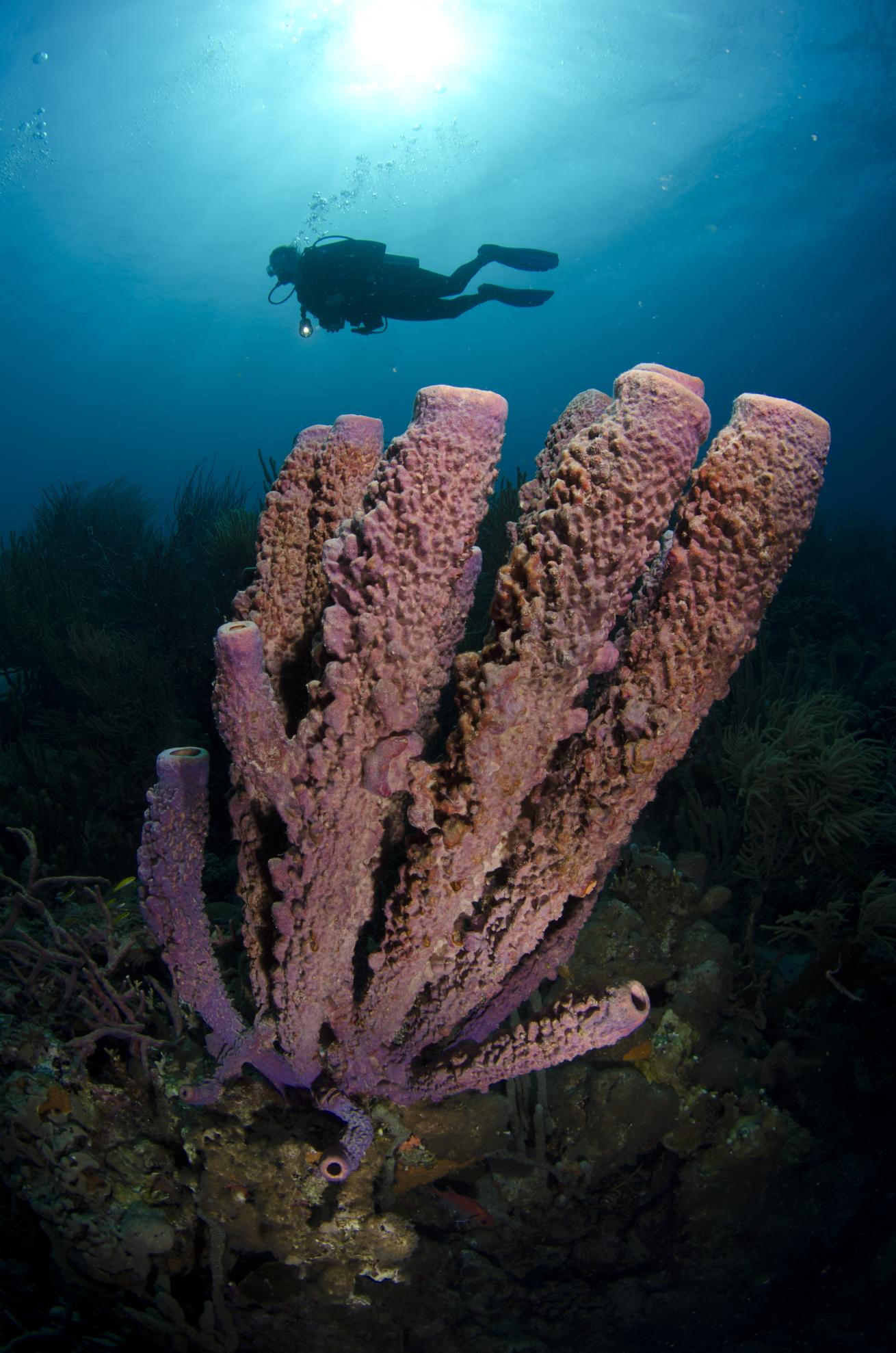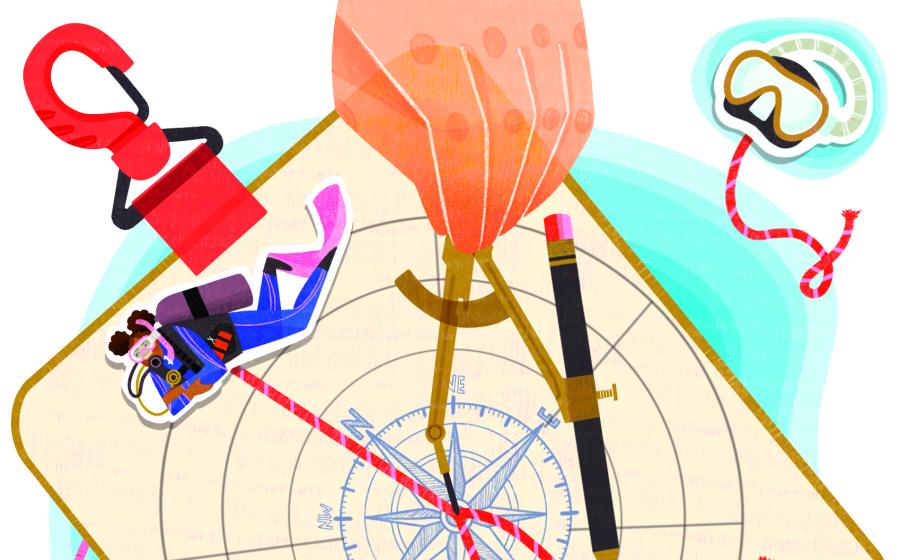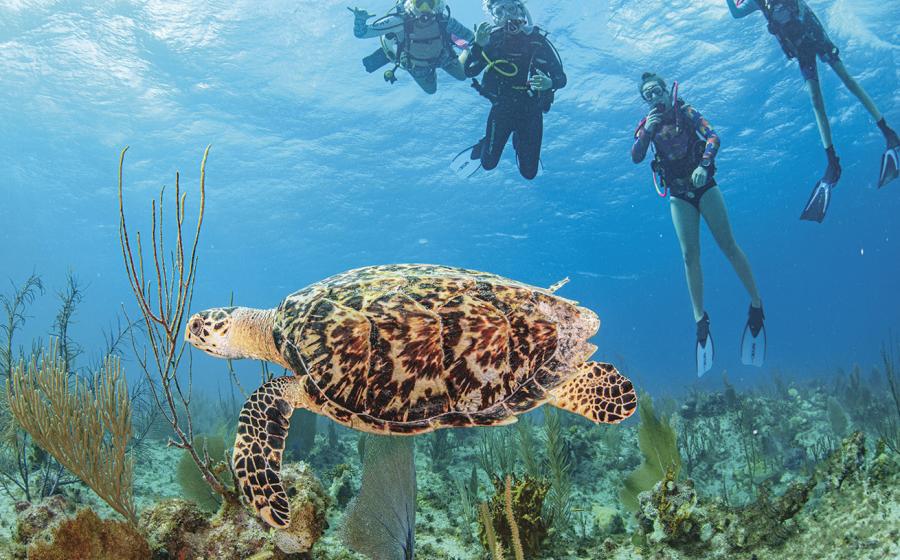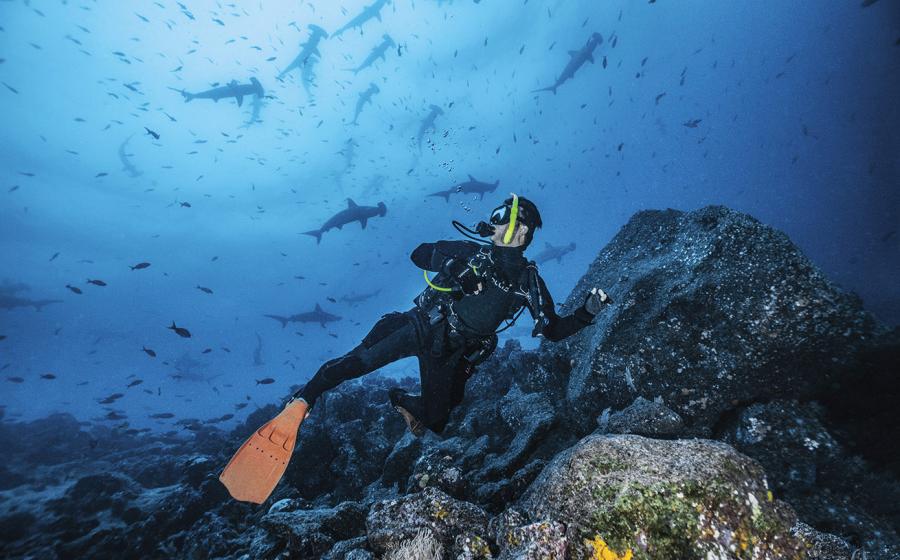Bonaire Diving: Three Cool Dive Sites to Try in This Divers' Paradise

With nearly 90 named dive sites — more than 50 of them accessible by shore — tiny Bonaire could keep any scuba diver underwater for a long, long time. Here are a couple of standouts from a recent trip — what are your favorites?
Red Slave
A relatively easy shore entry with an incredibly short swim to the drop-off: You’re practically at the reef as soon as you are in head-deep water. For us, the show started with a bang as we soared over the drop and landed right in an active school of blue bogas that swirled around us in ever-shifting patterns — mesmerizing, until they disappeared up the water column. Beautiful soft corals — the hard stuff was good here too — feathered the morning light from above as we encountered every sort of reef fish, multiple types of grouper and one very lively turtle, discovering various shrimp tucked into anemones along the way. We finished up amusing ourselves chasing loads of flounder across a sugar-sand bed up top. It’s a super-pretty site and a very relaxing dive.
Where: Red Slave is not far past the impossible-to-miss Cargill Salt Works — and its impressive pier, a good late-afternoon or night dive — as you head south along Bonaire’s western shore on EEG Boulevard, the main coastal road.
Bonus: Your entry is a historic spot — spend a little time checking out the unique “slave huts,” a reminder of the harsh environment that sustained the all-important salt trade, now thoroughly modernized, up through the mid-19th century.
La Dania’s Leap
Legend has it this site got its name when a few burly-man divers refused the daunting 15-foot-drop entry, and a little slip of a female diver showed them up and jumped right in. Today shore diving is discouraged here (rest easy, girly girls), but the spectacular site is readily accessible by boat. The reef slopes down in steps, with pools of coral at every level; the area is crazy with sponges of all kinds and colors, very fishy too. At the halfway point there’s a lovely wall, sort of a half-moon bowl, but the rewards keep coming all the way through your safety stop: Look for huge lettuce leaf slugs and seahorses on the plateau up top. One of the prettiest dives anywhere, this is one of those magical sites that fills you with the joy of being a witness to the underwater world.
Where: Located below the no-diving reserve on the western side of the island, south of Washington-Slaagbai National Park, this site is just west of the well-known Karpata dive site, a popular shore dive.
Bonus: You’ll get a wee hint of what remarkable Washington-Slaagbai National Park has to offer — the park is well worth a full day in itself.
Bari Reef
“Bari” means “barrel” in Papiamentu, the colorful local language that combines many of the disparate influences in the rich history of the ABC islands — Aruba, Bonaire and Curaçao — hearkening back to the days when this spot was essentially a dump in Colonial days and later. Today it’s a rich source of beach glass, some going back three centuries; the underwater world is just as colorful, perhaps more so, given that this dive site has been documented by REEF to have more than 300 species surveyed here alone. It’s a fish playground, and the almost-friendly residents are happy for you to play along too. Not as pretty as some Bonaire reefs on first glance, this super-accessible site has tons going on even in the shallowest areas, from tiny secretary blennies to humongous midnight parrotfish and everything in between. You could hang out here all day.
Where: Directly opposite the middle of tiny Klein Bonaire, about a kilometer away, the shore entry is just south of the Den Laman condos. Reward yourself post dive with the house cheeseburger at open-air Sunset Grill, on Den Laman’s first floor.
Bonus: Klein has some of Bonaire’s best white-sand beaches, a commodity in short supply on this rugged and rocky isle. Snag a kayak from numerous dive operators along this stretch of shore, and paddle out for some fun in the sun — just watch out that visiting cruise-ship passengers don’t “borrow” your kayak.










